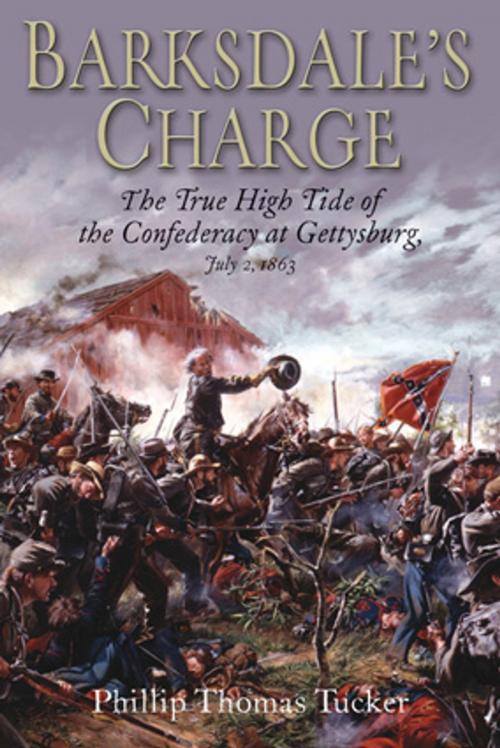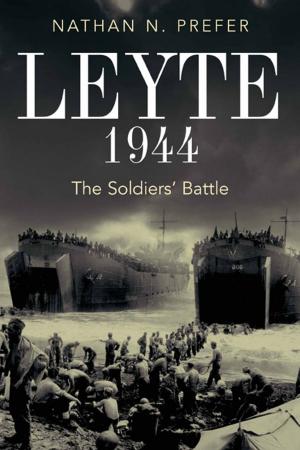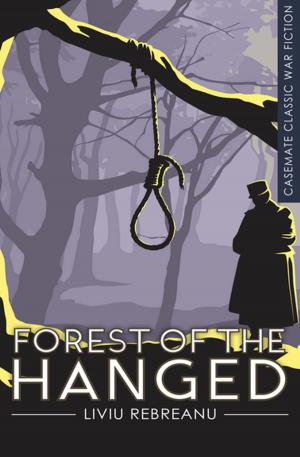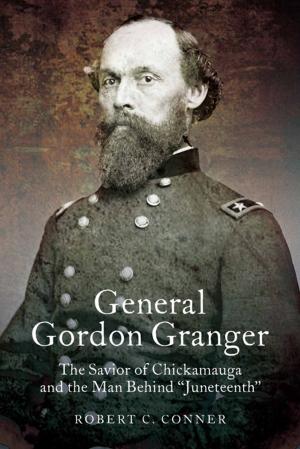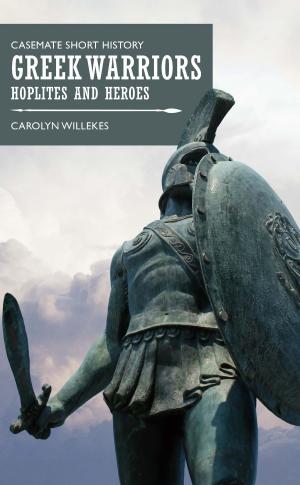Barksdale's Charge
The True High Tide of the Confederacy at Gettysburg, July 2, 1863
Nonfiction, History, Americas, United States, Civil War Period (1850-1877), Military| Author: | Thomas Tucker, Phillip | ISBN: | 9781612001807 |
| Publisher: | Casemate | Publication: | July 24, 2013 |
| Imprint: | Casemate | Language: | English |
| Author: | Thomas Tucker, Phillip |
| ISBN: | 9781612001807 |
| Publisher: | Casemate |
| Publication: | July 24, 2013 |
| Imprint: | Casemate |
| Language: | English |
On the third day of Gettysburg, Robert E. Lee launched a magnificent attack. For pure pageantry it was unsurpassed, and it also marked the centerpiece of the war, both time-wise and in terms of how the conflict had turned a corner—from persistent Confederate hopes to impending Rebel despair. But Picketts Charge was crushed by the Union defenders that day, having never had a chance in the first place.The Confederacys real “high tide” at Gettysburg had come the afternoon before, during the swirling conflagration when Longstreets corps first entered the battle, when the Federals just barely held on. The foremost Rebel spearhead on that second day of the battle was Barksdales Mississippi brigade, which launched what one (Union) observer called the "grandest charge that was ever seen by mortal man.”Barksdales brigade was already renowned in the Army of Northern Virginia for its stand-alone fights at Fredericksburg. On the second day of Gettysburg it was just champing at the bit to go in. The Federal left was not as vulnerable as Lee had envisioned, but had cooperated with Rebel wishes by extending its Third Corps into a salient. Hoods crack division was launched first, seizing Devils Den, climbing Little Round Top, and hammering in the wheatfield.Then Longstreet began to launch McLaws division, and finally gave Barksdale the go-ahead. The Mississippians, with their white-haired commander on horseback at their head, utterly crushed the peach orchard salient and continued marauding up to Cemetery Ridge. Hancock, Meade, and other Union generals desperately struggled to find units to stem the Rebel tide. One of Barksdales regiments, the 21st Mississippi, veered off from the brigade in the chaos, rampaging across the field, overrunning Union battery after battery. The collapsing Federals had to gather men from four different corps to try to stem the onslaught.Barksdale himself was killed at the apex of his advance. Darkness, as well as Confederate exhaustion, finally ended the days fight as the shaken, depleted Federal units on their heights took stock. They had barely held on against the full ferocity of the Rebels, on a day that decided the fate of the nation. Barksdales Charge describes the exact moment when the Confederacy reached its zenith, and the soldiers of the Northern states just barely succeeded in retaining their perfect Union.Phillip Thomas Tucker, Ph.D. Has authored or edited over 20 books on various aspects of the American experience, especially in the fields of Civil War, Irish, African-American, Revolutionary, and Southern history. A native of St. Louis, Missouri, he has earned three degrees in American history, including a Ph.D. From St. Louis University in 1990. For over two decades, Dr. Tucker served as a military historian for the U.S. Air Force. He currently lives in the vicinity of Washington, DC.
On the third day of Gettysburg, Robert E. Lee launched a magnificent attack. For pure pageantry it was unsurpassed, and it also marked the centerpiece of the war, both time-wise and in terms of how the conflict had turned a corner—from persistent Confederate hopes to impending Rebel despair. But Picketts Charge was crushed by the Union defenders that day, having never had a chance in the first place.The Confederacys real “high tide” at Gettysburg had come the afternoon before, during the swirling conflagration when Longstreets corps first entered the battle, when the Federals just barely held on. The foremost Rebel spearhead on that second day of the battle was Barksdales Mississippi brigade, which launched what one (Union) observer called the "grandest charge that was ever seen by mortal man.”Barksdales brigade was already renowned in the Army of Northern Virginia for its stand-alone fights at Fredericksburg. On the second day of Gettysburg it was just champing at the bit to go in. The Federal left was not as vulnerable as Lee had envisioned, but had cooperated with Rebel wishes by extending its Third Corps into a salient. Hoods crack division was launched first, seizing Devils Den, climbing Little Round Top, and hammering in the wheatfield.Then Longstreet began to launch McLaws division, and finally gave Barksdale the go-ahead. The Mississippians, with their white-haired commander on horseback at their head, utterly crushed the peach orchard salient and continued marauding up to Cemetery Ridge. Hancock, Meade, and other Union generals desperately struggled to find units to stem the Rebel tide. One of Barksdales regiments, the 21st Mississippi, veered off from the brigade in the chaos, rampaging across the field, overrunning Union battery after battery. The collapsing Federals had to gather men from four different corps to try to stem the onslaught.Barksdale himself was killed at the apex of his advance. Darkness, as well as Confederate exhaustion, finally ended the days fight as the shaken, depleted Federal units on their heights took stock. They had barely held on against the full ferocity of the Rebels, on a day that decided the fate of the nation. Barksdales Charge describes the exact moment when the Confederacy reached its zenith, and the soldiers of the Northern states just barely succeeded in retaining their perfect Union.Phillip Thomas Tucker, Ph.D. Has authored or edited over 20 books on various aspects of the American experience, especially in the fields of Civil War, Irish, African-American, Revolutionary, and Southern history. A native of St. Louis, Missouri, he has earned three degrees in American history, including a Ph.D. From St. Louis University in 1990. For over two decades, Dr. Tucker served as a military historian for the U.S. Air Force. He currently lives in the vicinity of Washington, DC.
